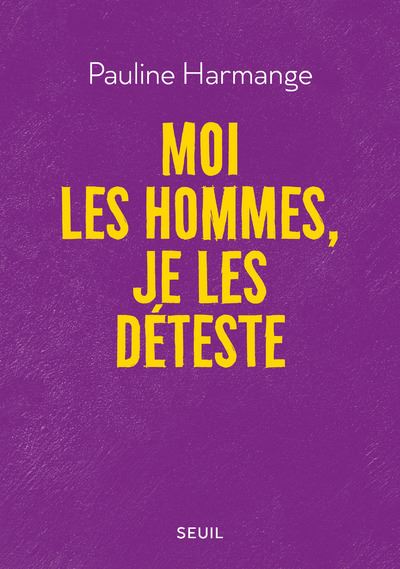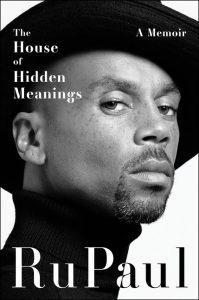
Pauline Harmange’s brief manifesto is not a coy thought experiment. It is a full-throated argument for misandry as a political position and as a psychic exit ramp from a world structured by male power. The title promises heat and the essay delivers, trading on anger, bluntness, and a refusal to soothe. Whether you find that energizing, reckless, or both will likely determine how this book lands for you.
What the book is really doing
Harmange writes from the premise that misogyny is structural and persistent, and that women’s daily experience of harassment, violence, belittlement, and unpaid care has normalized a constant, grinding harm. Misandry, in her telling, is not the mirror image of misogyny. It is a counter stance that names the source of the wound and grants women permission to step outside the endless cycle of appeasement and explanation. The prose is sharp, the tone intentionally inflammatory, and the argument unambiguous. Harmange is not here to persuade men. She is writing to fortify women.
Why it resonates
At its best, the book gives rhetorical shape to emotions many readers have carried privately. Harmange separates anger from violence, reminding us that justified fury at being treated as lesser is not equivalent to the physical danger men too often pose to women. She asks why men are so quick to object to generalizations yet so slow to interrogate the statistics that should unsettle them. And she skewers the cultural habit of applauding men for baseline parenting or domestic labor that earns women criticism or penalty. The effect is bracing. For readers who are exhausted by gentle appeals and endless debates about tone, the clarity feels like oxygen.
Where the argument narrows
The same ferocity that gives the book its charge can also make it feel sealed off. Several readers, including male feminists who approach the text in good faith, argue that a politics organized around hate risks replicating the flattening logic it resists. If all men are folded into a single undifferentiated category, the essay has less to say about complicity, change, coalition, or accountability in specific contexts. Others point out that the book does not fully grapple with intersectionality. Power does not move along a single axis, and gender sits alongside race, class, sexuality, and immigration status. When misandry is framed as a universal salve, it can obscure the ways some women benefit from whiteness or wealth while other women bear compounded harms.
There is also the question of horizons. Harmange is clear about what she rejects. She is less detailed about what she builds in its place beyond a sisterhood rooted in refusal. Some readers will find that refusal therapeutic and strategically useful. Others will want more scaffolding around practice, policy, or personal transformation.
Rhetoric, style, and the risk of performance
Because the book is short, style matters. Harmange favors declarative claims and a high ratio of punch to citation. This is a choice. It makes the book accessible and quotable. It also means the argument leans on moral clarity rather than sustained evidence or case studies. As a piece of polemic aimed at a particular audience, the gambit works. As a blueprint for broad movement politics, it leaves gaps that more patient works have tried to fill.
Critics who bristle at the absolutism note a potential drift toward purity politics. If misandry becomes the price of admission, what space remains for men who are learning to decenter themselves or for women who want to keep some ties across gender without excusing harm. That tension is not resolved here, and the book seems comfortable leaving it unresolved.
What thoughtful readers are saying
- Readers who share Harmange’s anger appreciate that the essay refuses to dilute itself for male comfort. They view misandry not as cruelty but as protective boundary setting in a world that reliably punishes women who are accommodating.
- Others argue that making hate the organizing principle is an ethical and strategic dead end, especially in multiracial, multiethnic, queer coalitions where gender is only one facet of power. They worry that misandry, stated as a universal, collapses nuance and undermines the very sisterhood the book celebrates.
- A third camp finds value in the book as a pressure valve rather than a program. For them, Harmange articulates a permission structure to be angry and to stop centering men. That release can coexist with longer term projects grounded in repair, education, and institutional change.
How to read it
If you come to this looking for a balanced symposium, you will not find it. Read it as a polemic that meets rage with language and turns a disallowed emotion into an organizing tool. Then pair it with works that dig into intersectional analysis, restorative frameworks, or policy levers. The conversation is richer when multiple registers are in play. Harmange supplies the flare that makes the rest impossible to ignore.
Verdict
Moi les hommes, je les déteste is a spark, not a settlement. It will galvanize some readers and alienate others. It names what many experience every day, and it declines to cushion the blow. That refusal is the point. Whether you treat the book as a rallying cry, a venting chamber, or a text to argue with in the margins, it is difficult to read it without feeling your pulse quicken. For a 100-page essay, that is no small accomplishment.
Ready to read it yourself and decide where you stand
Buy on Amazon


